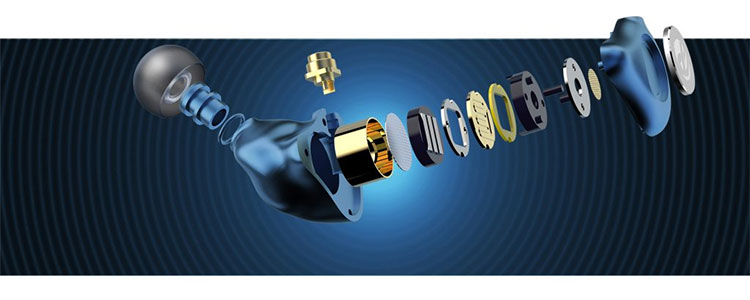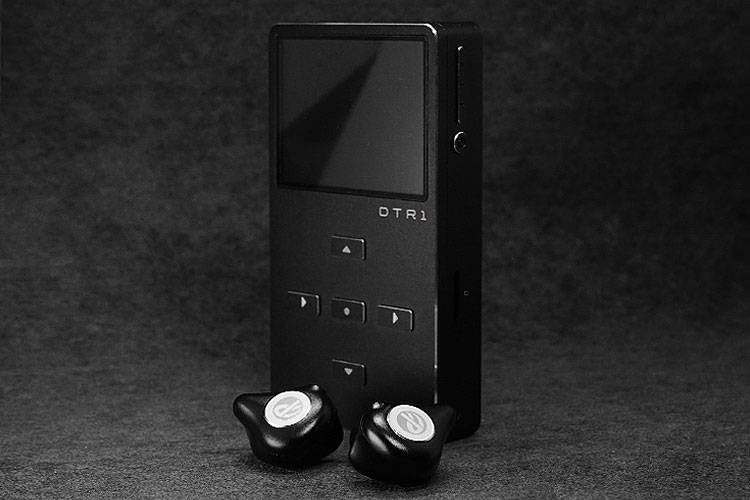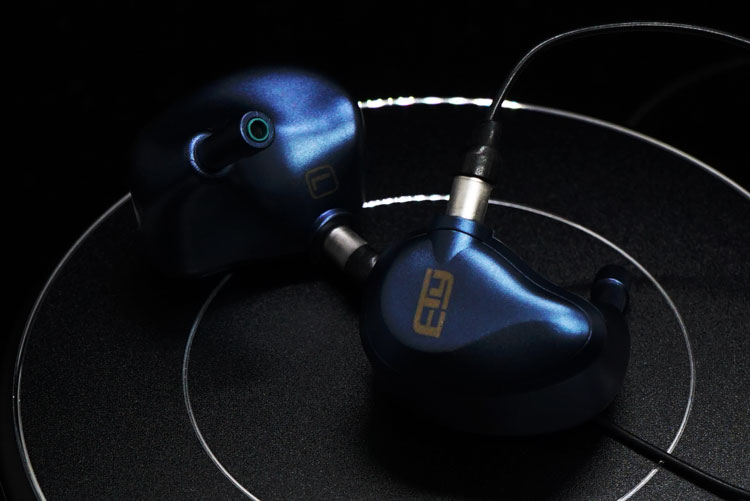This feature is a review of the Dethonray Tender 1 which is the company’s debut 10mm planar magnetic driver universal in-ear monitor. It is priced at $639.00.
Disclaimer: This was sent to us as a sample for our honest opinion. Headfonics is an independent website with no affiliate links or services. We thank the teams at Linsoul and Dethonray for giving us this opportunity.
You can read more about Dethonray products we have previously covered on Headfonics by clicking here.
Note, this article follows our latest scoring guidelines which you can read up on here.
Established in 2019, the Dethonray brand might be new to you even if you consider yourself a fairly hardcore audiophile. However, amongst the most discerning listeners, their niche DTR1 and DTR1+ non-OS-based SoC DAP players are well sought after and are one of the most organic-sounding DAPs in the market.
Surprisingly, last year Dethoray launched its first IEM called the Tender 1 which uses a large 10mm planar driver. Pitched at a little above entry-level and aimed squarely at the discerning audiophile, the full-bodied response and stereophonic image have blown me away right out of the box.
However, you should read on because you will need a powerful DAP or amp to get the best out of the company’s latest creation.
Tech Highlights
The Tender 1 is built from CMF-processed, aviation-grade aluminum and houses a 10mm planar magnetic driver that is known for rapid response.
The dense base material and full metallic architecture ensure controlled acoustic qualities, and according to Dethonray, the alloy used can effectively restrain the internal reflection inside the earphone cavity, which contributes to better clarity in the sound.
The 10mm planar magnetic driver measures 28Ω and 98dB SPL, which is not very sensitive on paper so I am expecting it to sound the best with sources and amps that have strong current output and higher gain.
Design
If you have been following Dethonray closely you can see a consistent, minimalist approach throughout all their products. You could describe their design language as a rather old-school UX but cool in its own way. This time the very rounded Tender 1 feels much less techy and its ergonomics are much more modern looking.
The housing is carved from aviation-grade aluminum alloy like a custom monitor and a fine sandblasted finish is applied. It is smooth to the touch with no grills or big vents that almost makes me forget there is a planar driver inside.
As for the build quality, you can see good machining quality without a mark, with a chamfered round insert on the top of the faceplate touching up the whole design nicely.
Comfort & Isolation
The housing of the Tender 1 is sculpted thin and light, so it slides into the ears and holds in place easily making this a comfortable fitting. With an average insertion depth, it maintains good isolation but won’t feel obtrusive in the ear.
The socket for the cable is extruded in a way that will keep the IEM inserted at the right angle. It is simple but effective in design and will prevent physical fatigue during long listening sessions.
As with most aluminum shells, it will be pretty darn cold initially in your ear, especially on a winter’s day or in front of the aircon. However, if you wear it for an hour or two the metallic IEM body will warm up and feel a lot more comfortable. Nothing new here, I get the same experience with most metal IEM builds.
Tips
The Tender 1 comes with a single set of S/M/L sized tips but I prefer using bigger-bore aftermarket tips for airier bass performances.
The supplied tips work quite well but rolling some foam tips results in punchier bass and even more rounded treble. The choice of tips does shape the sound differently on Tender 1, so do experiment with some alternatives to get the best seal and synergy.
Stock Cable
The Tender 1 stock cable is a soft PVC jacketed fine silver wire that feels quite durable to the touch. The housing on the 3.5mm plug, splitter as well as connectors are covered with machined metallic parts and it feels quite rugged also.
The stock cable helps shape the vocal sounding more rounded and 3D in imaging while boosting firmness in the low end. With the cable burned in with the Tender 1 for around 2 weeks, it sounds quite a bit more opened up and natural than when it first landed.
Packaging & Accessories
The packaging for Tender 1 is very minimalistic and consistent with Dethonray’s no-frills approach. There is no carrying case that comes with the Tender 1, so even though it looks tough it may still be useful if some protection gear was supplied.
With no excessive accessories, the whole focus is put on the product itself. I am fine with this but the IEM could possibly appeal to a bigger audience if they put it with fancier accessories and perhaps a small pouch.
Sound Impressions
Dethonray is quite specific to say that they want to achieve a “charming” tuning, which is not quite a technical term but somehow realized in their unique, melodious sound signature.
I didn’t expect this tuning style on a planar magnetic IEM based on my experience with the iSINE 20 and Tin HiFi P2 which sound faster. The Tender 1 has what I would describe as ‘intense body’ whilst not dragging down the delicate treble and speedy response on planars, rendering a natural sense of space at the same time.
Whilst the Tender 1 sounds full-bodied it is never short of speed and detail, offering a delicate treble control, some welcome transparency, and a wide, V-shaped tuning that emphasizes the lows.
As said you will need good output power to do the Tender 1 some justice. With capable players like the DTR1 and the Shanling M6 Pro 21, the bass punch will become much more impactful and faster in the attack.
In any case, the mid-lows have a soothing decay that colors the vocal line expressive and holographic. Harmonics are preserved around the 5kHz range and sibilance beyond is filtered off.
Bass
The Tender 1 brings forward plenty of energy down in the lows, coloring the bass range with immersive warmth, and delivering an authoritative and lively vocal performance. The richness in bass favors mezzo-sopranos, croaky voices, as well as giving a very expressive and energetic punch to the low-end and a thick, layered body to the lower mids.
The fast and tight attack speed from planar drivers is complemented by an expressive decay that empowers guitars and kick drums with ample energy. The bass guitar also cut through the mix clearly with decent texture and a tight image rendered.
Testing with Coldplay’s “Night Full Of Stars” the bass note impacting in the opening pans clearly from above, dispersing into the dark background when it sinks deep down.
With the 1812 Overture, good air is captured when the cannon fires. The Tender 1 manages to sound big and lyrical in bass without getting loose in details at a higher SPL. Chamber resonances with string instruments, as well as the faintly humping ambiance in the background are well captured to render the stage alive.
Mids
The upper bass swiftly articulates to the vocal line, keeping the vocal image tight and dense but without any honkiness. The mids on the Tender 1 are a little bit dipped compared to the forward bass line, though there is still a lot of fullness carried from the low end such that powerful voices sound meaty and physical.
The expressive bass and lower midrange frequencies can easily bring out the innate character of the vocalists. In particular, Cantopop and hoarse voices for example singers like Sia. It feels very immersive when soaring choruses set in and when higher notes are reached.
The smooth tuning works pretty well for folk songs and jazzes as well, where the vocal line is boldly presented with good energy.
Treble
Having a bass tuning that is pronounced and amazingly full on a planar doesn’t mean that the treble is compromised. Having said that, the Tender 1 is still the most rounded planar magnetic IEM I have heard.
This is actually a fun and energetic tuning which allows the IEM to be paired with powerful DAPs and still sound very controlled and detailed while having that immersive full-sounding bass.
The treble performance is quite dependent on the source and gain level, however. Amps with weaker outputs will encounter an earlier roll-off, with no sibilance heard but may sound slightly curtained.
When powered sufficiently the treble can sound textured and extended while being very rounded without any unwanted hotness. Sibilance tones between 5-10kHz are very tamed but you can still detect good air beyond that range for openness.
Staging
Extension on both ends is decent and can get quite expanded and stereophonic while keeping good agility in response with more output power. A good sense of height is presented and layering is above average also. It works surprisingly well with classical music.
If the source is weak for example on the iPhone 6’s output, the lower frequencies bleed over slightly, hampering the resolution and stage size perceived. A stronger source will color the Tender 1 more balanced, accurate, and controlled in the mid-lows.
The ample energy down in the vocal line can push the vocal image more forward helping to add more strength to weaker or lighter voices thus boosting the dynamics and tension in the music. The Tender 1 sounds desirable for lecture-hall-sized mixes, with enough headroom to accommodate and define orchestral works.
Synergy
Efficiency
You may need some good energy to tame the Tender 1 and it sounds dead quiet with most outputs. While requiring more current to unveil its true power, on everyday low power setups like my MacBook pro it does not sound thin or muddy.
However, you will get more headroom and improved resolution when paired with higher-powered outputs, especially players that sounds precise on higher gain and is strong in output current.
Pairings
Testing with the Luxury & Precision W2 offers decent density and control. You can feel the Tender 1’s appetite in soaking up more current for detail and dynamics, scaling up with higher output power as well as higher gain setting. The W2 holds up quite well, in this case, to not loosen up in image nor response speed, though some other entry-level DAPs may sound a bit flatter.
If you have the DTR1 player you can feel the leap in resolution and control from the W2, which does not sound as solid in the bass nor as detailed and dense in the upper mids as how the DTR1 renders it.
The output is most organic, engaging, and airy on the DTR1 so it is a great match with the Tender 1 Planar IEM. It offers a good tonal balance, precision, and musicality throughout the audio spectrum.
The same goes for the Shanling M8 which has a slightly warmer low end. Switching to the M8 turbo gain, you will hear the Tender 1 deliver more of a “HiFi-tuning” where the bass is faster in its attack yet maintaining a full-bodied presentation.
The vocal is dense and clearly outlined, and the treble frequencies are addressed really well, with decent air in the top end and little sibilance in the high-mid range even when the vocals or woodwinds get really exciting.
Another thing you will notice is the depth of the bass punch when there is more gain. It can hit much lower and sound airier, while the treble will be elevated with more power. Overall, there is good room for the Tender 1 to scale and it is free from distortion at high gain and SPL.
Select Comparisons
Shanling ME700
$459
Technical
Featuring a hybrid 1+4 configuration, the ME700 has an intensive, mid-bass-focused presentation that works exceptionally well with some genres of music.
The strong character can be detected out of the box even with minimal burn-in, and being not exactly easy to drive, the ME700 behaves similarly to power like the Tender 1 which means both scale quite well.
Design
The ME700 comes in a hand-made resin housing similar to custom monitors, with a stunning crazing faceplate design that looks classy and elegant at the same time.
Engineered by a very different approach the Tender 1 is built to be tougher, very minimalistic, and adorned by a metallic logo insert on top. Both IEMs are very light and are equally comfortable in the ears.
The Shanling is paired with a 4-braid cable terminated in 2.5mm and comes with an adaptor for 4.4mm TRRRS balanced outputs. In contrast, the Dethonray Tender 1 comes with a silver-colored SPC terminated in 3.5mm, which makes sense as it aligns with their single-ended-only approach. Balanced output users may need to find another cable with MMCX connections.
Performance
The efficiency and tuning remind me a little bit of the ME700 when I tested Tender 1. Both manufacturers are taking a rather traditional tuning approach, where the lush vocal, full low-end and airy response sounds exceptionally smooth with vocal works.
Playing some R&B on the W2, the momentum and punch in the bass are stronger on the ME700 with a more expressive decay. On Tender 1, a swifter transition from the lower mids to the mids can be heard, as well as a denser, faster bass response.
The ME700 is comparatively harder to drive, more colored, and is more rounded in the upper register. However, the multi-BA config helps extract more detail with weaker sources. When it comes to higher-end sources, both IEMs feel equally defined though the Tender 1 has a swifter, denser, and more smoothly articulated response in the mids.
In short, the coherence, as well as the more balanced tuning on Tender 1, gives it more flexibility to sound engaging with different genres easily, also being responsive to better sources.
On the other hand, the stronger coloration on the ME700 makes it a more immersive vocal performer with stronger detail retrieval, especially in the upper mids.
Etymotic EVO
$399.99
Technical
The Etymotic EVO is the brand’s first multi-driver approach with a 3 BA, two-way crossover design under the hood. It displays great technicalities in its bass and is also capable of reproducing the midrange frequencies quite naturally.
Design
The EVO is like a 3D puzzle with irregular parts fusing together and paired with it is a light profile Estron Linum BaX T2™ system cable that feels very tough.
The nozzle extends with double flanges for a very deep fit that gives excellent noise blockage though it may not be very easy to take off. You can hide the cable inside your shirt behind the neck but if you don’t, be careful not to have it hooked on something else.
The EVO is more unique in design with exceptional build quality, though the comfort department could be its caveat if you don’t like your earphones to go deep.
Performance
The EVO isn’t an easy-to-drive IEM, you can feel it being less dynamic sounding on phones and tablets, though its neutral tuning allows it to pair with almost any gears without sounding off.
Tuning on the EVO is more bass light, and it requires quite a bit of power to sound dynamic but it sounds great with sources that have powerful bass.
The Tender 1 responds more to precisely tuned sources. With parings like the Questyle QP2R or the Soncoz SGA1 it can sound very resolving in the mids and dense in the midrange with no harshness in the treble, nor feeling overly contained at the same time.
While the two respond to power differently, another key difference in sound is the vocal body, where the EVO is more precisely tuned and the Tender 1 is more powerful, bigger in imaging for vocals, and also sounds more stereophonic.
The EVO is cleaner and leaning more towards transparency, so it may sound less powerful in the vocal line especially with hoarse, emotional voices also grand backing instruments/ orchestras.
Our Verdict
The Dethonray Tender 1 is extremely full-bodied yet unambiguous in presenting the micro-details. There are outstanding technicalities and fantastic synergy with powerful sources, the rich low-end sounds are immersive and stereophonic with almost any track.
The organic, hypnotic tuning that Dethonray perseveres is quite different from the common V-shaped approach. Using planar technology, it blends together speed, texture, and intense mid-lows quite seamlessly.
The Tender 1 would be a good recommendation for Dethonray DAPs users or equivalent powerful DAP owners.
Dethonray Tender 1 Specifications
- Impedance: 22 Ω
- Sensitivity: 98±3dB
- Frequency Response Range: 20Hz-20kHz
- Rated Power: 5mW
- Max Power: 10mW
- Max Distortion: 1dB
- Interface: Gold-Plated MMCX Connectors
- High-Purity Silver Cable










